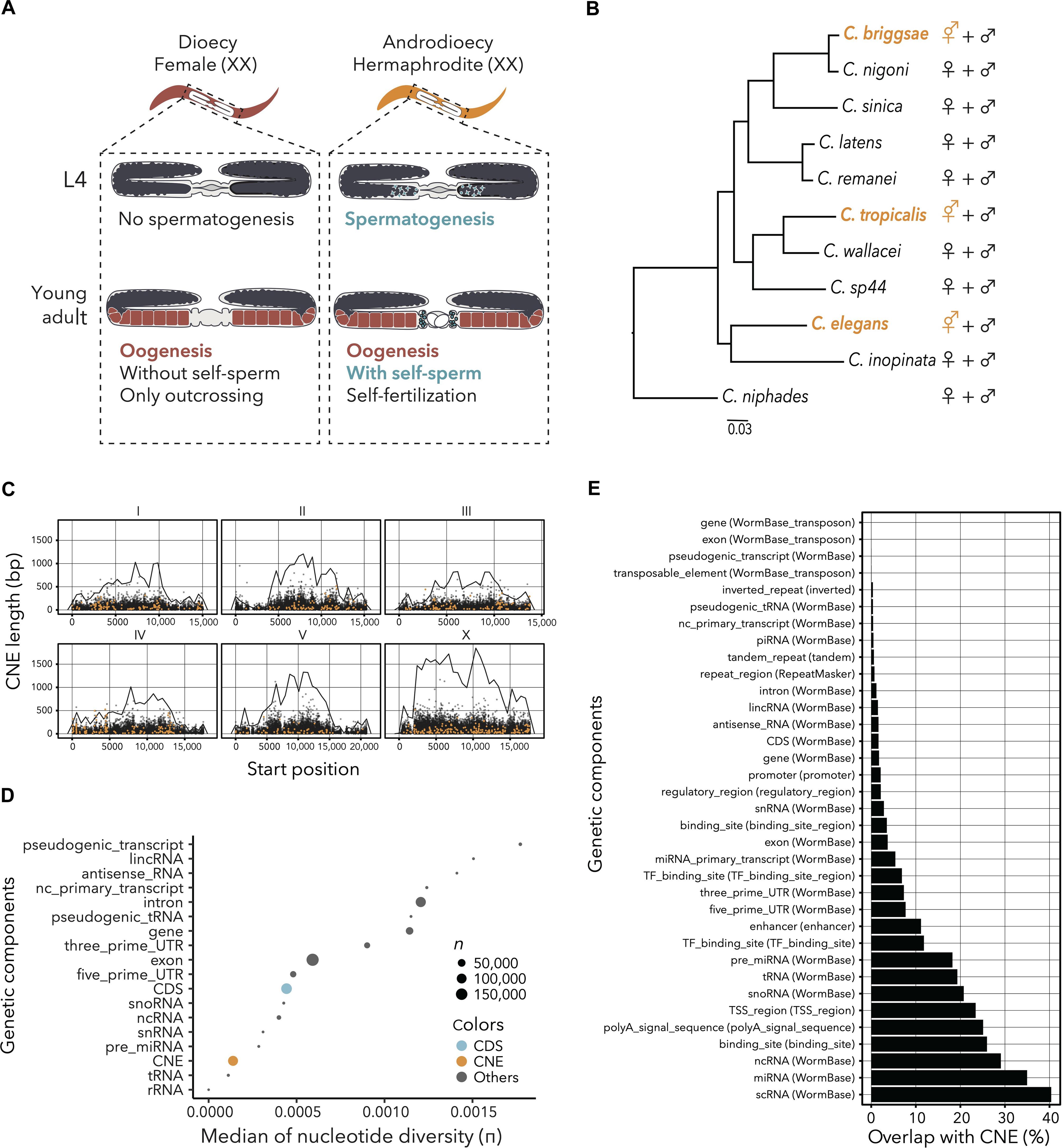Evolutionary changes of noncoding elements associated with transition of sexual mode in Caenorhabditis nematodes
IF 11.7
1区 综合性期刊
Q1 MULTIDISCIPLINARY SCIENCES
引用次数: 0
Abstract
The transition of the sexual mode occurs widely in animal evolution. In Caenorhabditis nematodes, androdioecy, a sexual polymorphism composed of males and hermaphrodites having the ability to self-fertilize, has evolved independently multiple times. While the modification of noncoding regulatory elements likely contributed to the evolution of hermaphroditism, little is known about these changes. Here, we conducted a genome-wide analysis of conserved noncoding elements (CNEs) focusing on the evolution of hermaphroditism in Caenorhabditis nematodes. We found that, in androdioecious nematodes, mutations rapidly accumulated in CNEs’ neighboring genes associated with sexual traits. Expression analysis indicate that the identified CNEs are involved in spermatogenesis in hermaphrodites and associated with the transition of gene expression from dioecious to androdioecious nematodes. Last, genome editing of a CNE neighboring laf-1 resulted in a change in its expression in the gonadal region undergoing spermatogenesis. Our bioinformatic and experimental analyses highlight the importance of CNEs in gene regulation associated with the development of hermaphrodites.

与 Caenorhabditis 线虫性模式转变相关的非编码元素的进化变化
有性模式的转变广泛发生在动物进化过程中。在 Caenorhabditis 线虫中,雌雄同体这种由雄性和具有自交能力的雌雄同体组成的性多态性已经独立进化了多次。虽然非编码调控元件的改变可能促成了雌雄同体的进化,但人们对这些改变知之甚少。在这里,我们对保守的非编码元件(CNEs)进行了全基因组分析,重点研究了 Caenorhabditis 线虫雌雄同体性的进化。我们发现,在雌雄同体线虫中,与性状相关的 CNEs 邻近基因中的突变迅速积累。表达分析表明,所发现的 CNEs 参与了雌雄同体线虫的精子发生,并与基因表达从雌雄异体向雌雄同体线虫的转变有关。最后,对邻近 laf-1 的一个 CNE 进行基因组编辑后,其在精子发生过程中的性腺区域的表达发生了变化。我们的生物信息学和实验分析凸显了 CNE 在雌雄同体发育相关基因调控中的重要性。
本文章由计算机程序翻译,如有差异,请以英文原文为准。
求助全文
约1分钟内获得全文
求助全文
来源期刊

Science Advances
综合性期刊-综合性期刊
CiteScore
21.40
自引率
1.50%
发文量
1937
审稿时长
29 weeks
期刊介绍:
Science Advances, an open-access journal by AAAS, publishes impactful research in diverse scientific areas. It aims for fair, fast, and expert peer review, providing freely accessible research to readers. Led by distinguished scientists, the journal supports AAAS's mission by extending Science magazine's capacity to identify and promote significant advances. Evolving digital publishing technologies play a crucial role in advancing AAAS's global mission for science communication and benefitting humankind.
 求助内容:
求助内容: 应助结果提醒方式:
应助结果提醒方式:


